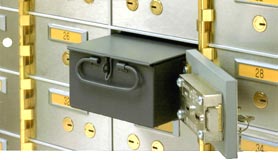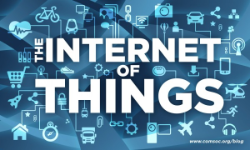Who Will Host My #PersonalCloud?

I think I inadvertently touched a nerve today.
After reading the post “Why the ‘i’ in iPhone Will Stand For ‘Identity’“, I tweeted an interesting statement from the middle of that post:
“Establishing one’s company as the de facto digital identity layer is the single biggest business opportunity” http://t.co/OGboZREiTj
Almost immediately, @windley re-tweeted my post and @dsearls responded:
@mgd … and a huge mistake, again, because identity is personal: http://t.co/Ip1VubbY8E #vrm
After reading Doc’s rebuttal to the iPhone paper, “Identity is Personal,” and his earlier post, “Identity systems, failing to communicate,” which speaks to why our current Identity systems are so abysmal, and a third post, “People will do more with Big Data than big companies can,” which predicts that personal clouds will emerge this decade as the best solution to the identity problem, I tweeted this question:
@dsearls Who do you predict will host the personal cloud(s) that will resolve our identity challenges? Â #vrm #PersonalCloud
Doc’s answer:
@mgd People themselves, and/or fourth parties they choose. Read @Windley for more on this. #personalcloud #vrm
Doc is right. Â Phil Windley has written some excellent posts on the subject. Â Some recent ones, in chronological order:
- Own Your Identity: Important Principles
- Build the World You Want to Live In
- Pot Holes and Picos
- IMAP as the Proto Personal Cloud
- Personal Clouds and the Future of the Web
I do like the concept of personal clouds.  I have experimented a little bit with Phil’s personal cloud infrastructure at Kynetx.  The orange SquareTag in the upper right area of this blog is an artifact of my little experiment to tag my social media places with SquareTags and connect them to my personal cloud hosted by Kynetx.
But my question still remains: What companies will emerge as the leading hosters of personal clouds? Â I don’t want to host my own; I don’t think my wife, as bright as she is, would learn how to do it.
I would like my personal cloud to be hosted by a capable institution I trust. I would like Identity credentials I select from my personal cloud to be recognized by every website I choose to visit, and I would like the payment method I choose from my personal cloud to be accepted by every vendor I purchase things from. Â That will require broadly accepted standards for Identity and payments and the large-scale infrastructure to make it work.
I tend to think that it will take some pretty large organizations to pull that off.
My vote for an institution to host my personal cloud? Â My bank. Â It already has a vault full of things that are like analog personal clouds – safe deposit boxes. Â I choose what goes in my box and what comes out. Â The bank can’t get it without my key.
Plus, my bank provides a whole litany of payment options. And, I tend to trust them to take are of my money. Perhaps I could trust them with my digital safe deposit box as well. Â I’d even be willing to pay for it.
Will they do it? Â That is another question.

